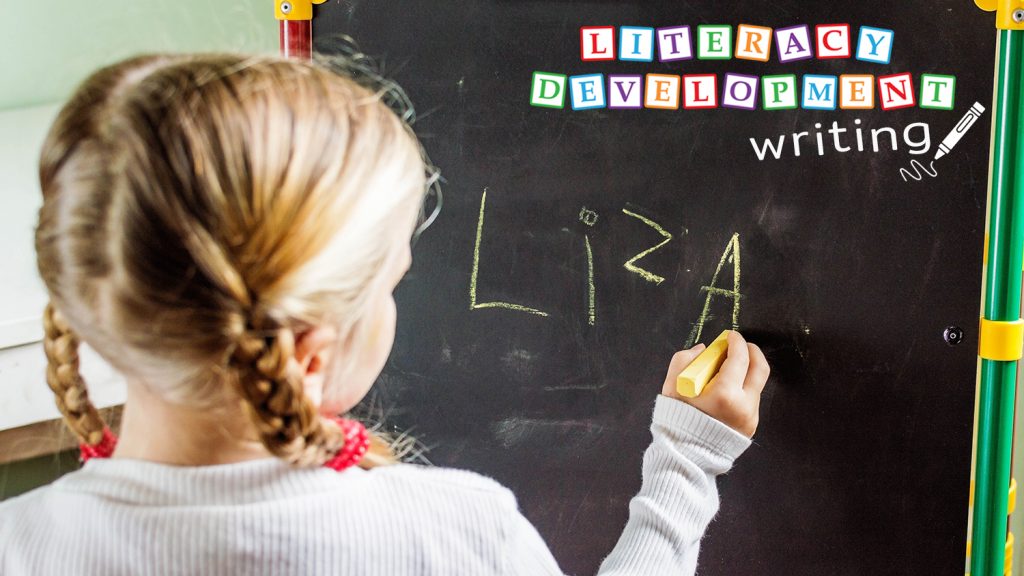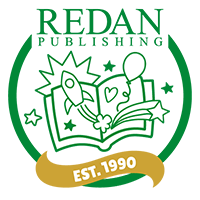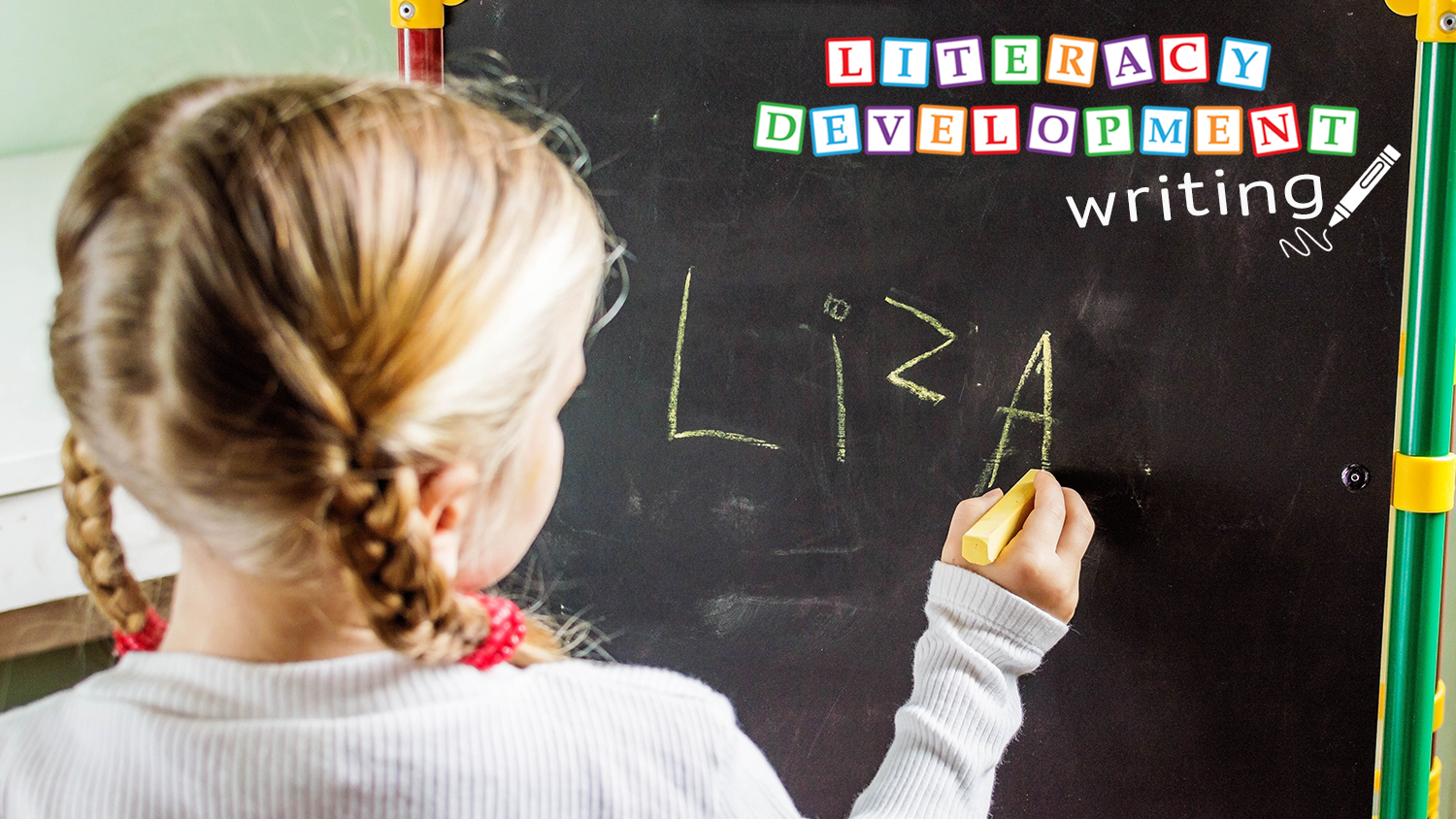
The Beautiful Early Years!
Key Area No.2: Literacy Development – Writing
As a teacher writing is one of the most joyful areas of learning to develop. That magical moment when a child first forms a letter for their name or brings you a ‘story’ is just incredible. I am also aware that there is a somewhat ‘secret knowledge’ around writing development which really does need to be widely shared. The journey towards being a writer is much broader than you might think…
Loving Language and Communication
To write you need to first be able to communicate. For most children this means developing spoken language and for others it may be through sign or other forms of communication. Communication is at the very heart of how we function as human beings and writing is a very sophisticated way of formalising that. Time spent enjoying nursery rhymes, sharing books and generally just chatting about the world is all gold dust in laying the foundations for writers.
Children are natural storytellers. During play, children will develop long and imaginative narratives. This is early story writing! As children get a little older you can write down some of these stories for them. This then can be read back to them, and they have that beautiful first experience of ‘writing’ and are authors!
Physical Development
We sometimes forget that small people are not just physically growing but they are physically developing. The physical skill of writing is complex and therefore there are developmental stages before they are ready to pick up a pencil. Children learn the art of body control gradually. First babies hold up their heads, then they develop core strength so they can sit and so on. The limb control develops gradually also. First the shoulders, hands and finally fingers.
Therefore, it is essential to develop the gross motor control (big movements) before the fine motor control (small movements). Interestingly, post lockdown, Early Years specialists have noticed a real delay in gross motor development, particularly with poor core muscle strength. So, the reasons for getting outside have never been stronger! Encourage your child to balance, climb, swing, dig, dance and carry things (!). All of this will develop their gross motor skills and provide a lot of fun!
Mark-Making
Children love to make marks. Chalks, paint brushes and water are both great outdoor activities. Chalks on the floor are great fun. Show your child how to draw big lines and circles going in different directions. Paint brushes on the wall with water are great fun too and making these big movements on a vertical surface helps to develop wrist control.
You can gradually bring more refined mark making activities into your child’s play. A few examples,
- Trays with gloop (cornflour and water) are great for messy finger fun
- Paper for drawing/painting
- Hand painting, finger painting, printing
- Wet sand and sticks.
As children begin to develop their fine motor abilities, they will begin to appear more comfortable holding a pencil. At first, they will probably adopt what’s referred to as a ‘dagger grip’ before beginning to adopt a triangular grip with which you’ll be more familiar.

Pen to Paper
From the moment children begin to put pen to paper they are writers! This is a fully recognised part of the writing process and is a joy to behold. Those scribbles are circle movements they will use when forming letters and you can respond with, ‘Wow, that’s amazing – tell me about it!’ Gradually their ‘writing’ will be more purposeful and most commonly this will be part of their play. You’ll notice zig zags, lines or circles represent writing.
Many Fun To Learn Friends and Favourites magazines have great ‘maze’ and ‘path’ activities which can help with pencil control and developing finer movements.
Letters and Sounds!
So, when does this process become writing as we know it? It’s important to note that reading and writing are two sides of the same coin. As I raised in, ‘Literacy development -Reading’ https://redan.co.uk/early-years-literacy/ the English language is very complicated. We therefore need to ensure that we link the letter with its sound to make most sense.
Emergent Writing…
As children begin to learn sounds, they can begin to make the shapes of these letters. At first children’s writing will have occasional recognisable letters (most commonly with letters from their name). Then they will start to write with the first and last sounds and maybe some simple words and it will all slowly, gradually and beautifully grow from there.
Skills Practice and Independent Joy
In learning to write it is really important that we do not aim for any kind of perfection, but children begin to gain confidence. Skills practice is useful when they are at the stage of independently writing and workbook pages such as these examples from Fun To Learn Friends #471 and Favourites #473 are great, vibrant ways to do this along with their favourite characters…

Becoming a writer is a very complicated skill. Small people will learn this skill at different times and should never be forced. A happy, playful chatty environment, reading lots of lovely books, and enjoying lots of outdoor play will provide the best foundations for child development, and that includes our future authors!
Rachel x
This Blog series looks at the 7 key areas of learning in the Early Years Foundation Stage and links activities featured in our Fun To Learn magazine range that will help support this development.
Images: © Shutterstock | © Redan
Sample Page Images: © Viacom | ©2022 Moonbug | © 2022 The Elf Factory Ltd/Ent. One UK Ltd/Hasbro. | © ABD/eOne/Hasbro


